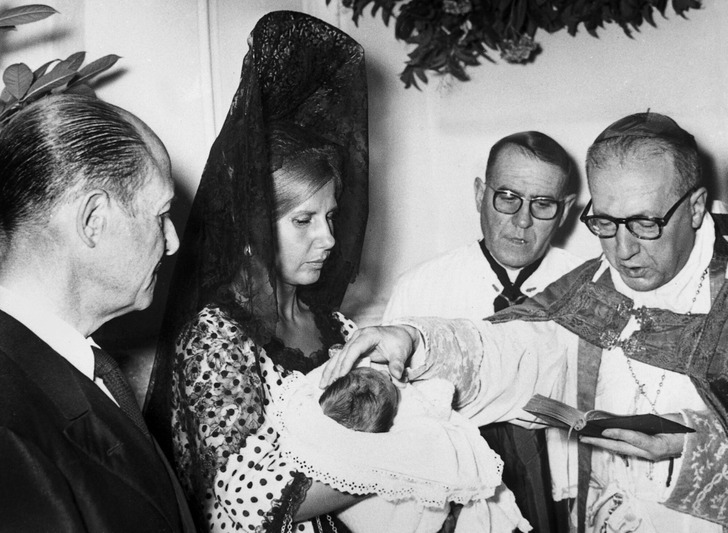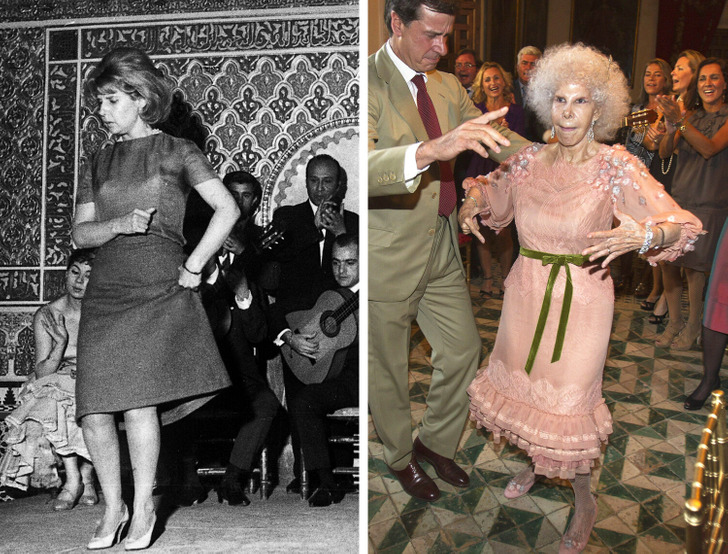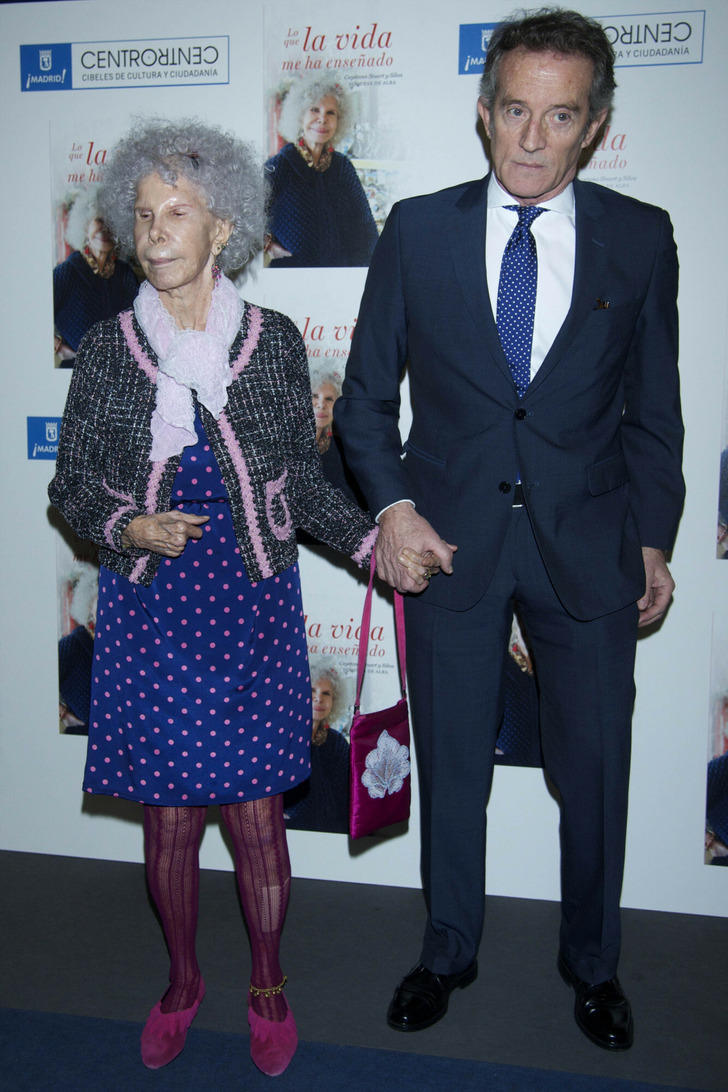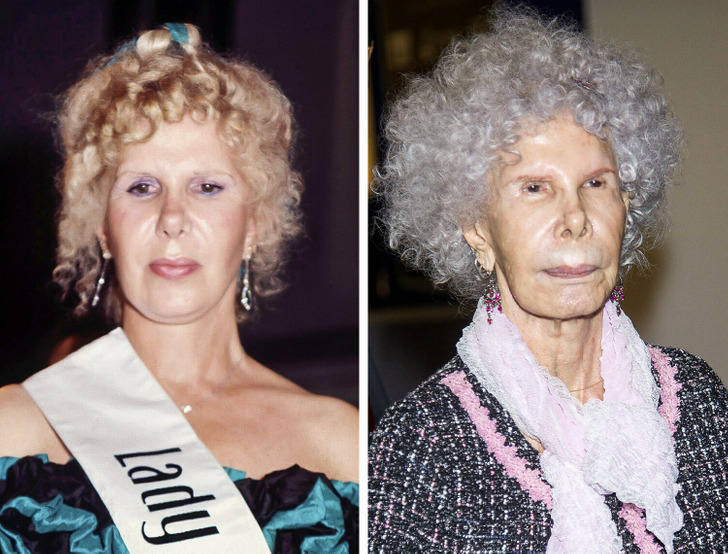Young Woman Documents Her Double Jaw Surgery, and Leaves Everyone Stunned With the Results


Maria del Rosario Cayetana Fitz-James Stuart, widely recognized as “Cayetana,” held an astounding 57 noble titles, securing her as the world’s most titled noble. As the 18th Duchess of Alba, she not only bore this distinguished title but also held the distinction of being Spain’s wealthiest woman, amassing an estimated fortune of approximately 3 billion Euros. Some even speculate that her captivating persona may have served as inspiration for the Duchess of Cambridge’s iconic wedding dress.
Cayetana was a figure of cultural significance. She declined an opportunity to sit for the renowned artist Picasso, boasting a more extensive collection of titles than even Her Majesty, The Queen of England.
More often than not, the spotlight shined on her distinctive wild hair, flamboyant fashion sense, and her relationship with her younger husband. This billionaire luminary had unveiled greater insights into her eventful life with the release of her second autobiography, a mere two years following the debut of her first memoir.
The Duchess of Alba, Cayetana, shares a distant familial connection with notable figures such as Sir Winston Churchill and Diana, Princess of Wales, both of whom can trace their ancestry back to Arabella’s daughter, Henrietta Fitz-James. Despite her privileged upbringing, the Duchess candidly revealed in her latest literary work that her life has not been devoid of challenges and difficulties.
Cayetana entered into matrimony with Luis Martínez de Irujo y Artázcoz, an aristocrat and the son of the Duke of Sotomayor, in a grandiose ceremony held in October 1947. This event marked Spain’s last significant feudal wedding, and it earned the distinction of being the most extravagant, with an estimated expenditure reaching 20 million pesetas. The opulent celebration played host to 2,500 guests who were treated to a lavish champagne reception.

In 1953, upon the passing of her father, Cayetana inherited an impressive array of titles, including 18 counts, 14 grandees, and five duchesses. Additionally, she assumed responsibility for his estates, notably the Liria Palace, a true gem that had endured destruction during the tumultuous times. She embarked on the formidable task of its reconstruction, a testament to her dedication.
Masterfully managing her media presence, the Duchess successfully transformed the image of her family from a traditional dynasty of old-money aristocrats into that of a modern, Bohemian woman at the helm of a family of philanthropists and luminaries. In a nation where the royal family remains distant from media scrutiny, Cayetana and her clan stepped in to provide the public with the captivating stories and gossip they yearned for.

Her second husband was Jesus Aguirre y Ortiz de Zarate, a man of intellect and a former priest who had served as Cayetana’s confessor. This union, which took place in 1978, caused quite a stir in high society. It was a marriage that raised eyebrows, as Aguirre was not only 11 years younger than her but also born out of wedlock. Tragically, he succumbed to cancer in 2001.

The Duchess met her third husband Alfonso Díez Carabantes, a civil servant over two decades her junior, in the 1980s, through her second husband. But they started dating after a chance meeting in a cinema. In 2011, Cayetana entered her third marriage. This decision sparked controversy, facing opposition from King Juan Carlos and accusations from some family members that Díez was merely a fortune seeker.
After much negotiation, Díez signed a formal document renouncing any claims to her wealth, ensuring that her legacy would be preserved for her six children from her first marriage. Cayetana humorously remarked at the time that her wealth consisted of many artworks, but she couldn’t dine on them. Díez was interviewed shortly after their wedding, which featured Cayetana energetically dancing flamenco after hitching up her dress.

She gained widespread recognition for her cosmetic enhancements. In her later years, she was frequently cited as one of the most prominent examples of a skilled plastic surgeon’s work, showcasing the advancements in this field.
In her youth, she enjoyed a renowned reputation for her beauty, but as time passed, and she underwent a series of alterations, her appearance evolved. There are rumors that her lips were enhanced, her nose refined, her cheeks augmented, and her wrinkles smoothed out, all while her brow received a subtle lift.
These transformations contributed to elongating the shape of her face and gave her mouth a more prominent appearance. Simultaneously, regular filler injections had the effect of reducing the prominence of her eyes. A family friend admitted that she “clearly took it too far.”
Cayetana Fitz-James Stuart, the Duchess of Alba, represented not only a last living connection to the illustrious era of Spanish grandees but also held a unique place in British history, which now regrettably fades with her passing.
Throughout her life, she maintained an extraordinary zest for living. She once humorously remarked, “I confess I am thinking of keeping on living...so I can enjoy the expression on people’s faces.”
In the realm of reality, life often unfolds with an unpredictability and complexity that can surpass even the most captivating movie scripts. Everyday existence is filled with a tapestry of stories, each unique and filled with a depth of emotion that no screenwriter can fully capture.











